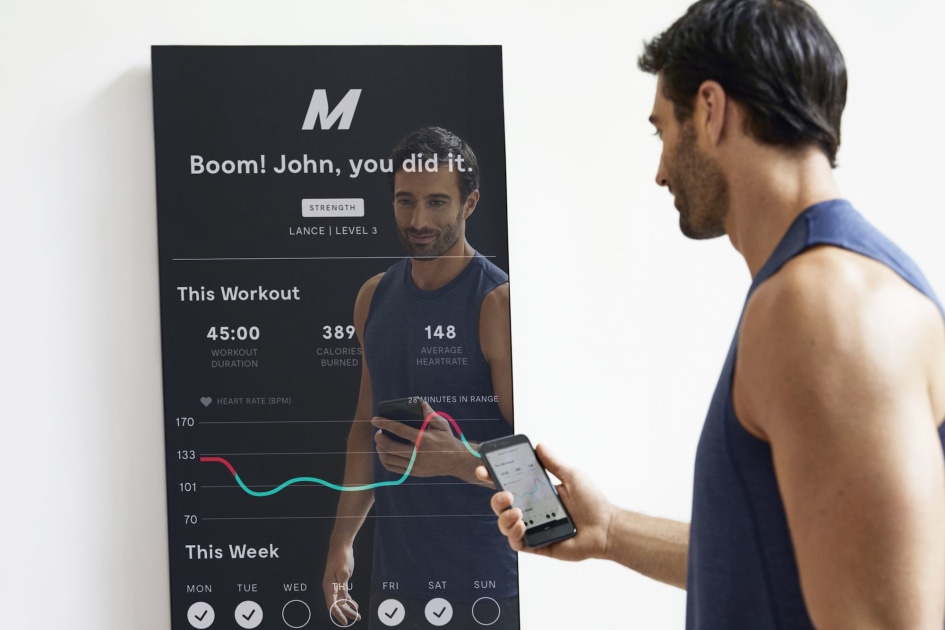Via your classmate Laura

Famous Canadian athleisure brand Lululemon delivers more than tank tops and yoga mats to their customers; they deliver a thriving brand community that people want to be a part of. By promoting values of mindfulness, health, and total wellness, this brand is communicating that it understands who their customers are and what appeals to them.
As a lifestyle brand that is synonymous with health and wellness, Lululemon has promoted a cult-like community of avid fitness fiends. Whether their customers are elite athletes training for the Olympics or busy moms looking for comfy gear for their everyday lives, Lululemon wants to connect with their customers and make them feel good about themselves. To do so, the brand has completed its first ever acquisition: fitness tech company, Mirror. The home fitness start-up sells mountable mirrors on which customers can stream live workout classes. This $500 million acquisition is a step in the right direction to keep connecting with their customers once they’ve left the store, further driving Lululemon as an experiential brand (Maheshwari 2020).
To become a true lifestyle brand, companies have to resonate with their consumers (Harvey, 2018). As the creators of the “athleisure” industry, it’s safe to say Lululemon has succeeded here. Lululemon has become a total experience for consumers, providing value beyond their quality products (Segran, 2018). This is seen through their consumer-based health and fitness events and experiential store in Chicago, offering in-store fitness classes, and a smoothie bar (Lululemon, 2020). This type of commitment to their customers will only be strengthened with their acquisition of Mirror. By giving customers a way to pursue health and fitness in the comfort of their homes, the Mirror drives home Lululemon’s mind and body wellness brand personality.
At-home fitness companies like Peloton are thriving in the midst of the pandemic as people strive to reach their fitness goals at home. Lululemon’s acquisition of Mirror could not have come at a better time as it will provide a new revenue stream and emphasize the goal of strengthening their brand community.

Mirror equipment acts as a digital screen, displaying workout classes and a mirror to allow users to see their reflection. The Mirror is meant to fit in any room, seamlessly turning any space into an at-home gym. Mirror is equipped with expert instructors that provide motivation and live feedback, personalization based on goals, injuries, and preferences, and customized playlists. The retail price is USD$1,495 or an option of USD$41.53/month for 36 months and an additional $39/month for access to the classes (Mirror 2020).
Mirror will also allow Lululemon to reach customers in new ways and bring the value of their in-store classes to the living rooms of their customers. Mirror currently offers classes in Pilates, barre, kickboxing, and strength training, but Lululemon plans to expand by leveraging their network of “brand ambassadors” to deliver Yoga classes as well (Maheshwari, 2020). This acquisition places Lululemon in a great position to continue empowering their customers.
As a brand centred on health and wellness, this acquisition can leave both Lululemon and its customers smiling at themselves in the mirror.
References
Harvey, S. (2018, February 11). Identity and ideology: What is a lifestyle brand? Medium. https://medium.com/swlh/identity-and-ideology-what-is-a-lifestyle-brand-30fb27971d0b.
Lululemon. (2020). Lincoln Park. lululemon Lincoln Park Store in Chicago, IL. https://shop.lululemon.com/stores/us/chicago/lincoln-park?clickref=1100l6H9AoTJ.
Maheshwari, S. (2020, June 29). Lululemon to Buy Mirror, a Fitness Start-Up, for $500 Million. The New York Times. https://www.nytimes.com/2020/06/29/business/lululemon-buys-mirror.html.
Mirror. (2020). How It Works. https://www.mirror.co/how-it-works.
Segran, E. (2018, September 25). Lululemon, the brand that invented athleisure, plans its second act. https://www.fastcompany.com/90237752/lululemon-the-brand-that-invented-athleisure-plans-its-second-act.






